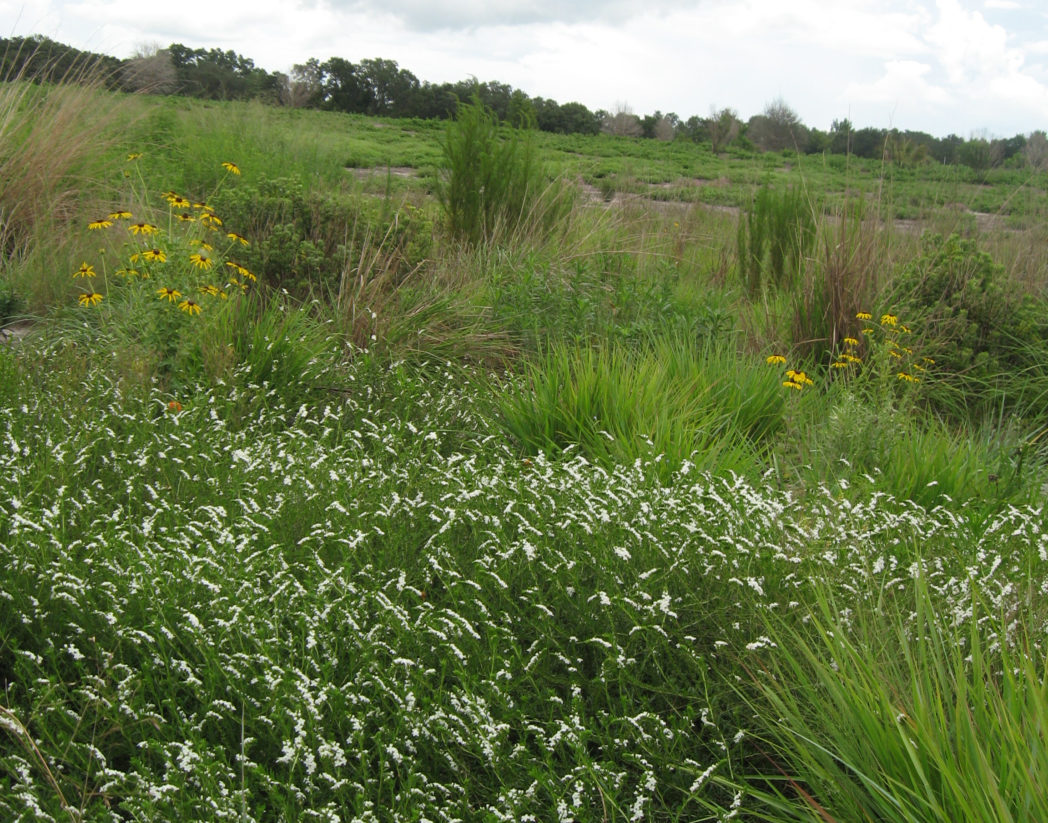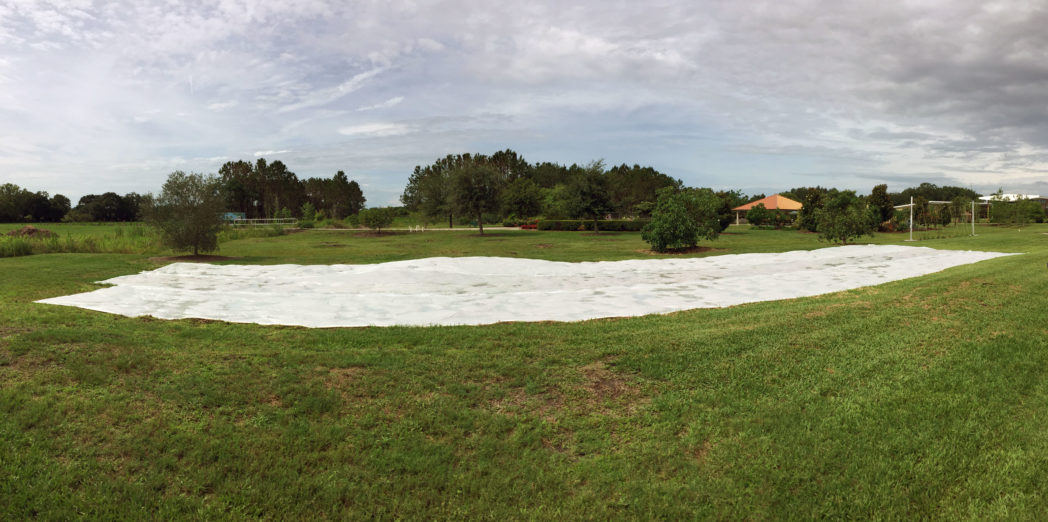Layering is key in Orange County meadow design
Funded in part by a Viva Florida Landscape Demonstration Garden grant from the Florida Wildflower Foundation, a new wildflower meadow and no-mow zone will be installed at the Orange County UF/IFAS Extension just in time for the 2017 Florida Wildflower Symposium. Landscape designer Andrea England tells us about the project and the inspiration behind her meadow design.
When considering a native meadow design, familiarity with the plants and how to manage them is key to the planting’s success. Before starting my own backyard meadow six years ago, I first visited places where I could see Florida’s native wildflowers and grasses in a natural environment. I visited other Viva Florida grant sites, as well, including PEAR Park in Lake County, which has five acres of restored meadow. It was exciting to see native wildflowers in person and in their natural setting for the first time. (I had no idea that Liatris, which bears a beautiful stalk of purple flowers and that I once prepped in florist bouquets, was native to Florida!)
Central Florida gardeners will soon a have a new location to see and explore Florida’s native wildflowers and grasses. I’m excited and honored to have a hand in designing this new addition to the Orange County UF/IFAS Extension’s Exploration Gardens in Orlando.

The meadow will be approximately 2,700 square feet and will include 25 species of Florida native wildflowers and grasses. Eventually, it will connect two sections of a planned native tree walk. The site was prepared by solarizing the planting area for about 10 weeks during the hottest part of the summer. Solarization is an effective means of obtaining a weed-free planting site. For information on solarization, check out the Foundation’s step-by-step guide.

The design strategy was to incorporate the right balance of plants into four different “layers.” This idea and process of layering plants is described in Planting In A Post-Wild World, Designing Plant Communities for Resilient Landscapes by Thomas Rainer and Claudia West (Timber Press, 2015). Two layers will provide the structural accents and seasonal color effects; the other two more functional layers will do the job of covering ground and filling in gaps.
In the structural layer, taller plants really stand out and become the framework of the meadow. This layer makes up about 15 percent of the planting and will be installed first and with the greatest attention to getting the coverage just right. Next, sweeps of color will be added as a backdrop to the structural layer. A few of the species you will see in these layers are Wand goldenrod (Solidago stricta), Vanillaleaf (Carphephorus ordoratissimus) and Florida false sunflower (Phoebanthus grandiflorus).
The functional groundcover layer will take up approximately half of the meadow and will consist mostly of grasses and perennials. Ideal choices for groundcover plants keep their foliage, hold their shape and look good for as long as possible. Native grasses to be used in this layer are Wiregrass (Aristida stricta), Pineywoods dropseed (Sporobolus junceus) and Lovegrass (Eragrostis spp.). Native wildflowers that will serve as groundcovers are Rayless sunflower (Helianthus radula) and Tall elephantsfoot (Elephantopus elatus) — both have large oval-shaped basal leaves that hug the ground.
About five percent of the planting will be filler species. Good fillers are the ones that reseed easily and everywhere. Some of our natives that act as good fillers are Leavenworth’s tickseed (Coreopsis leavenworthii), Black-eyed Susan (Rudbeckia hirta), and Carolina wild petunia (Ruellia caroliniensis). These species come and go, but they do the important job of filling in gaps. I used a small quantity of these plants because a little goes a long way in replenishing the seed bank. The groundcover and filler layers are what make the meadow resilient as they provide a base or matrix for the more colorful and showy design layers. At the time of installation, these functional layers will be placed last, filling in the spaces around the more carefully placed design layers.
Andrea England is a landscape designer specializing in designing native meadows for Central Florida. She can be reached at MyFloridaMeadow.com.
All of the plants used in the design are readily available from nurseries that specialize in Florida native plants. Visit PlantRealFlorida.org to find a nursery in your area. Plants for this project were procured from Green Isle Gardens and The Natives Inc.
